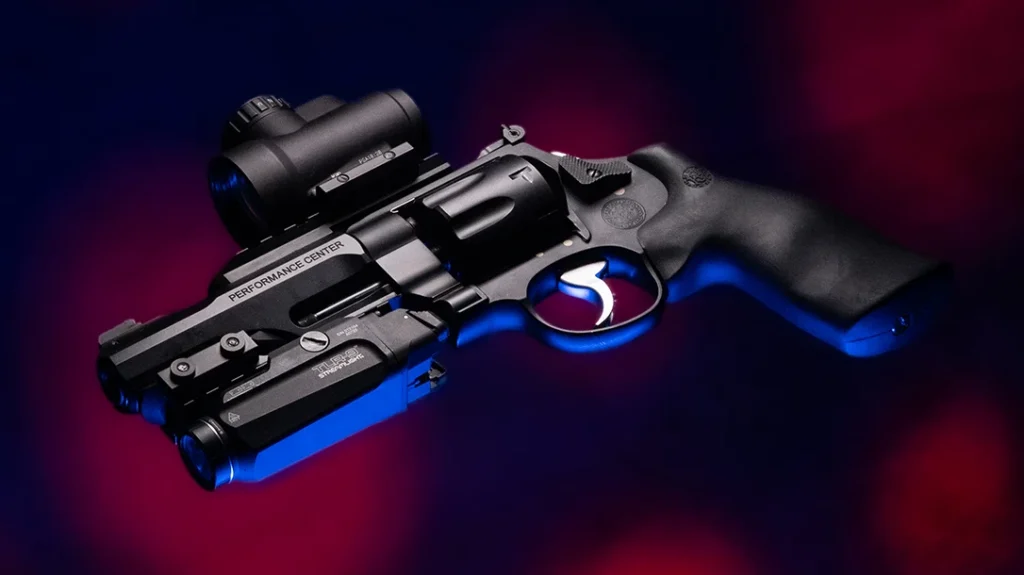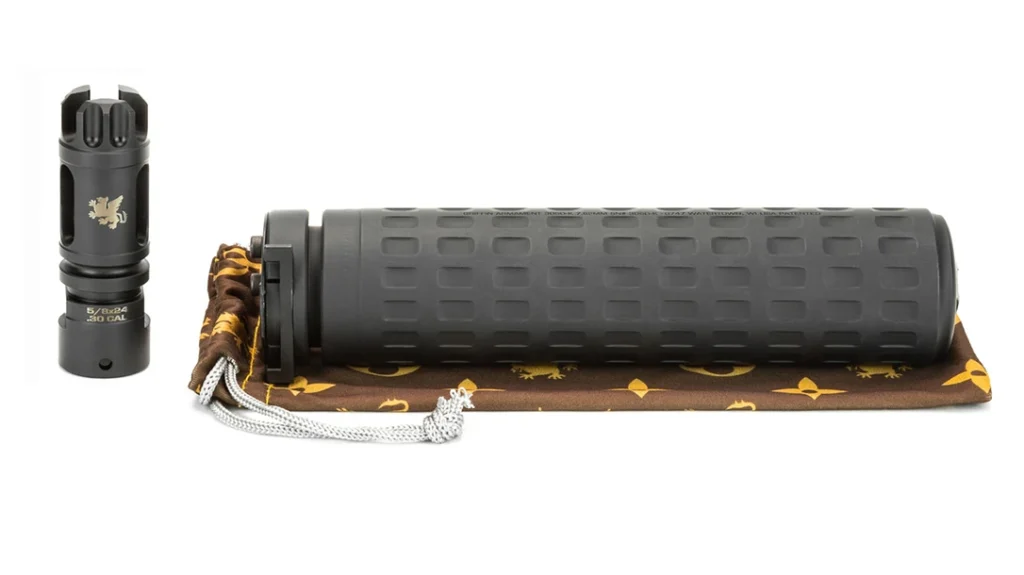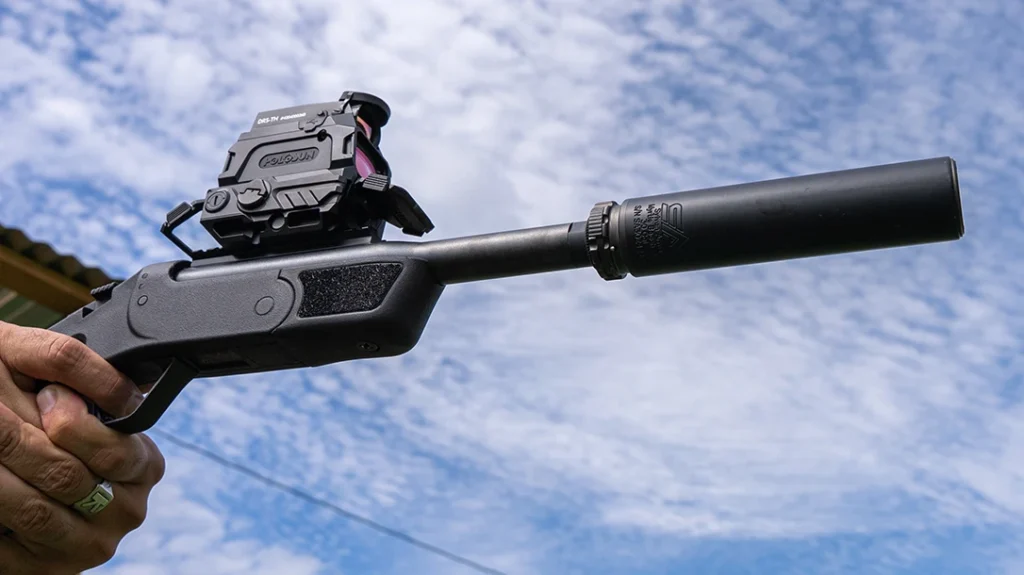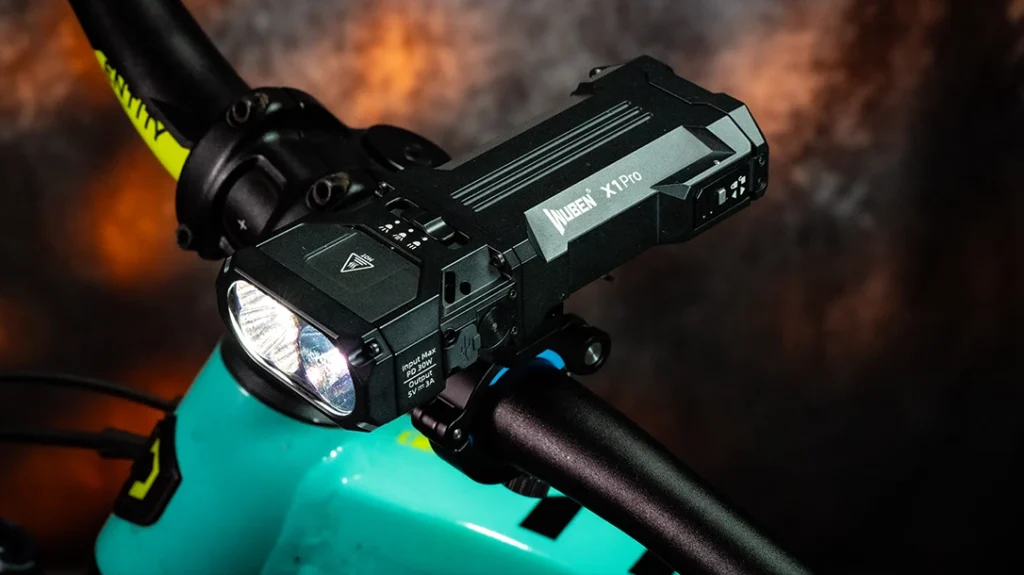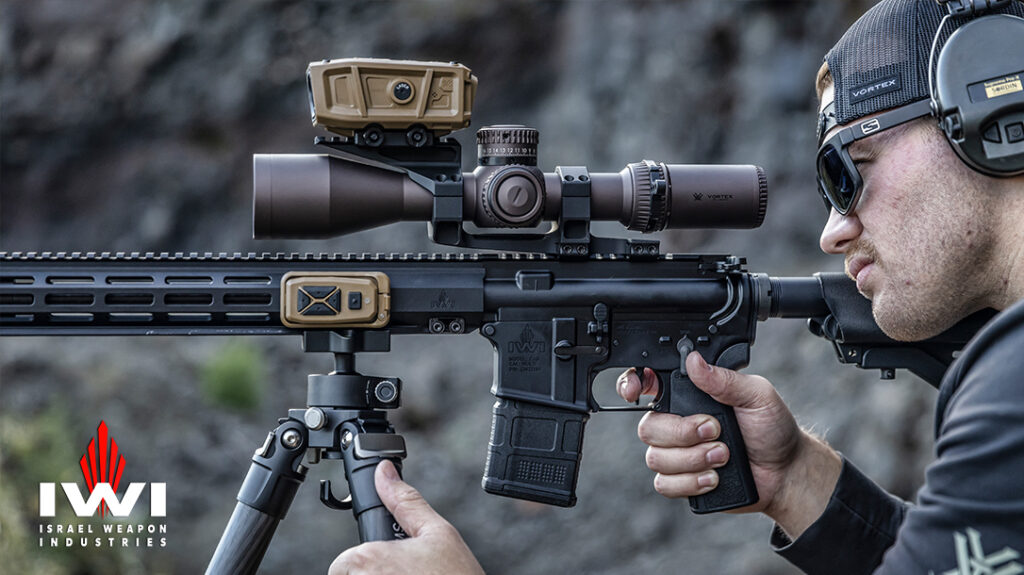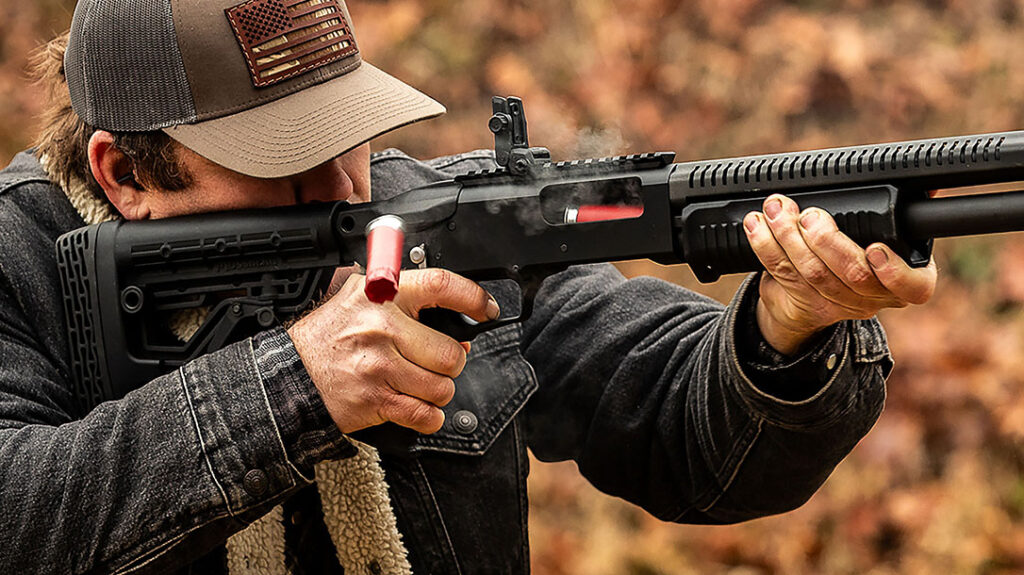In December 2024, industry heavyweights Ruger and Magpul combined talent with the RXM polymer striker-fired 9MM pistol introduction. Ruger X Magpul = RXM — get it? Ruger and Magpul had been working on the RXM project for over three years before the December 2024 launch. Magpul’s familiarity working with polymers is acknowledged. Magpul designed a frame for the RXM that was rigid yet flexible, allowing for a certain amount of “flex” that promotes reliability. Magpul’s propensity to produce magazines is also well known. The RXM arrives with two 15-round PMAG 15 GL9 magazines. These magazines were originally designed to work in the ubiquitous GLOCK 19, which the RXM resembles in terms of profile.
RXM Fire Control Insert
An important RXM feature is the removable fire control insert (FCI) “chassis”. The FCI fits inside the Magpul frame. The slide wears a tritium front sight and a steel rear sight. The RXM arrives with an optics cut that is adaptable to multiple red dot optic patterns. The RXM’s iron sights are slightly elevated over the norm to be co-witness compatible with most red dots.
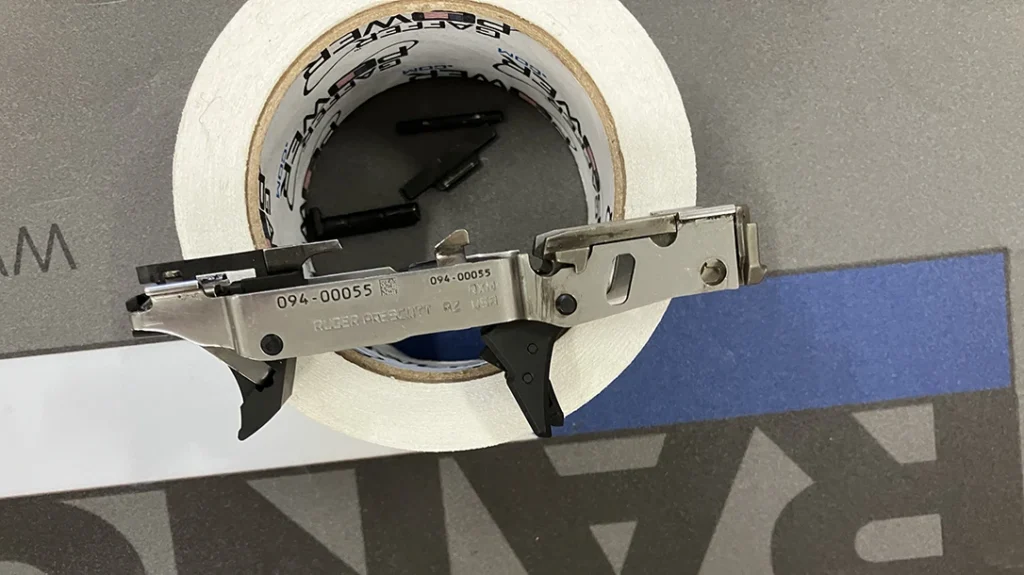
Advertisement — Continue Reading Below
Forward and rear serrations aid in purchase, as does Magpul’s Enhanced Handgun Grip (EGH)stippling pattern on the front, sides, rear, and “memory” ledges on the frame. An enhanced, low-profile, integral flared magazine well simplifies restocking onboard ammunition supply. Extended magazine release and slide stop levers facilitate manipulation of the RXM. An undercut trigger guard, material relieved where the trigger guard connects to the grip, allowsyour primary hand to get closer to the bore’s axis. This helps limit muzzle flip during recoil. This is further supported by an extended beavertail, which also helps prevent slide bite, especially during rapid strings of fire.
The RXM dust cover features a universal rail for mounting lights, lasers, etc. The RXM is an amalgamation of insightful Ruger and Magpul design decisions. It truly offers more than merely the sum of its parts. The RXM benefits from Ruger’s quality control and experienced workforce, which pulls it all together.
First Impressions
My initial introduction was a visit to New Orleans to Range Ready/Gun Talk Studios. I got to spend two days on the range with the RXM, going through a series of drills and training under Range Ready’s Chris Cerino’s watchful eye.
Advertisement — Continue Reading Below
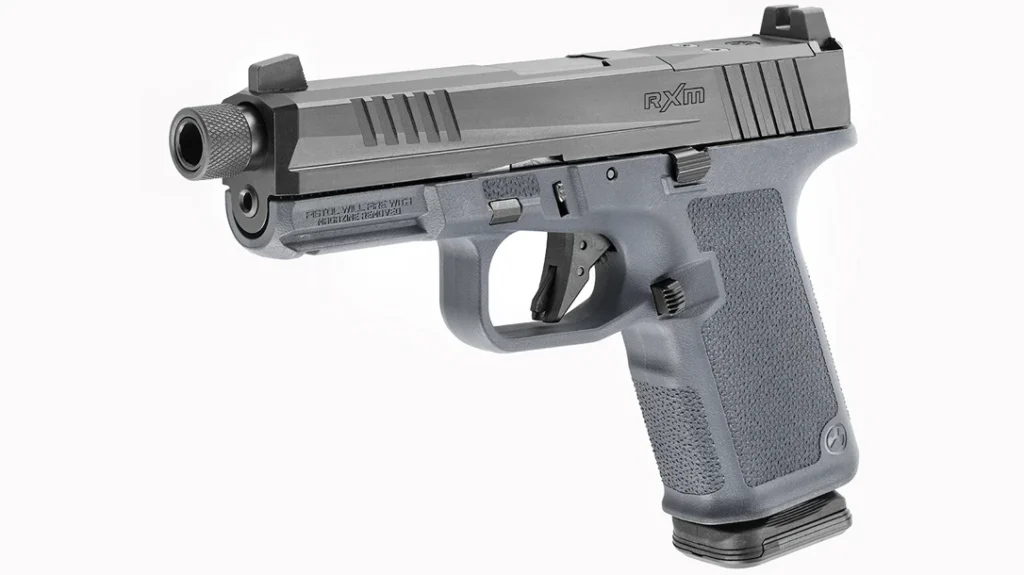
Two waves of event participants helped proof eighteen RXMs. Over 20,000 rounds were put downrange during the week. One RXM was nominated for torture testing with 8400 rounds in 48 hours. Each participant was assigned the duty to fire at least 100 rounds with it. Most volunteered for more. This RXM was frequently placed in a bucket of water when it got too hot to touch, and then it was back at it!
During lunch and other breaks, Ruger’s Tabor Bright showed the simple procedure for removing the RXM’s FCI as well as how the optics mounting system works. The FCI opens the RXM’s future modularity involving different combinations of frames and slides. The optic mount system is a must-have for any handgun on the market today. This is a great segue to the latest RXM model, the threaded barrel RXM variant that was just announced, which enables me to reunite with the RXM.
Advertisement — Continue Reading Below
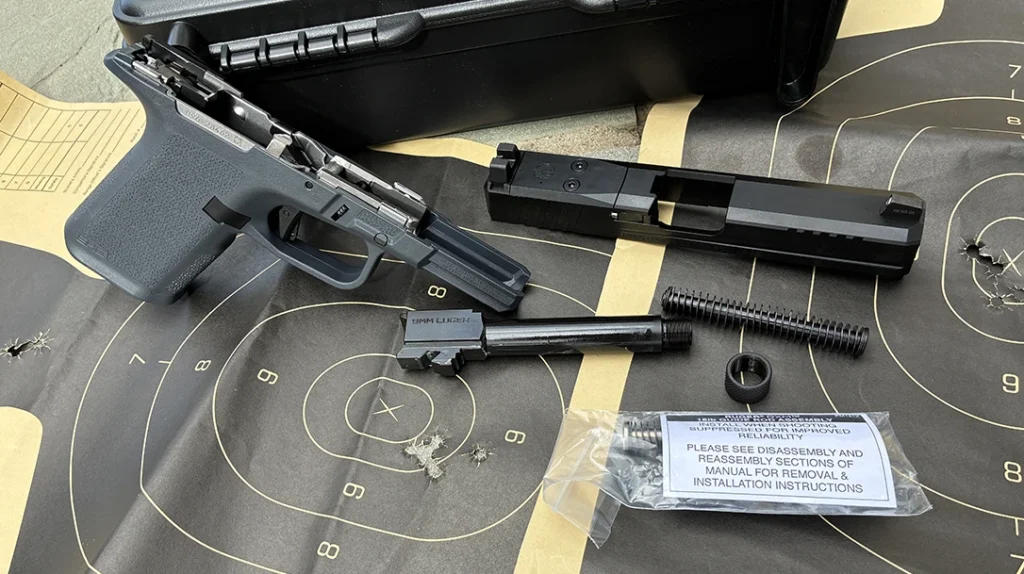
RXM Threaded Barrel At Home
Evaluation of the RXM with threaded barrel (RXM-T) took place at my home range, Echo Valley Training Center (EVTC). Considering the RXM-T’s design intent as an everyday carry (EDC) handgun, it was decided to dedicate some time to evaluating it working around vehicles, door entries, and other CQB activities. EVTC’s onsite Hesco Shoot House and 360 Range were ideal test locations with numerous steel targets, plate racks, and dueling trees. The Ruger RXM-T proved a quick-handling handling accurate handgun with multiple rounds fired in quick succession.
A handgun like the Ruger RXM should be fired as it is designed to be used—standing and while moving to get off the “X”. This is the true measure of real-world accuracy, combining trigger pull, grip, and sights. Initial range time used the RXM-T as it arrives with the well-done iron sights. However, the RXM’s optic cut was soon wearing a Holosun HS507C optic.
Advertisement — Continue Reading Below
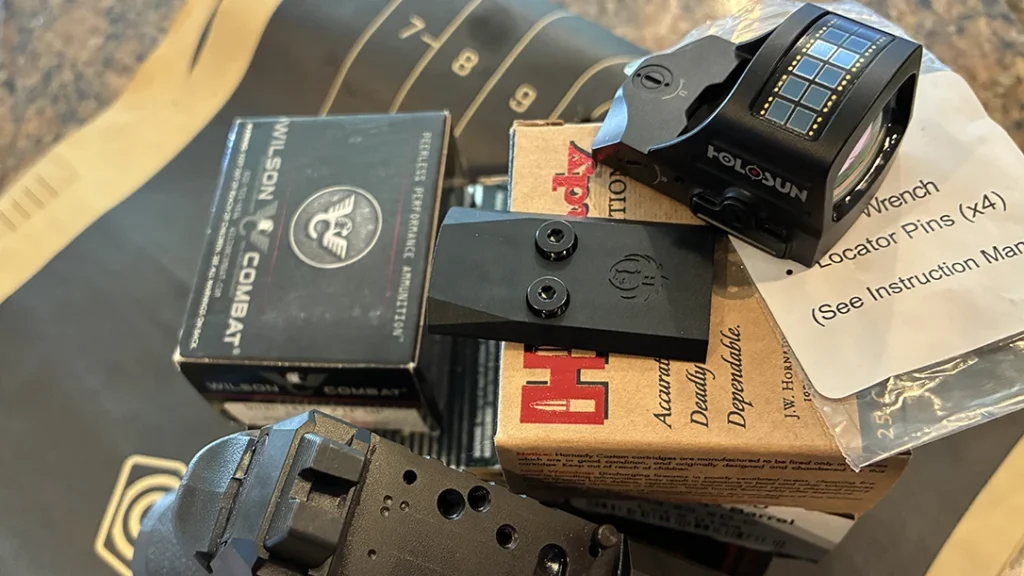
First Range Run
After reliability and accuracy verification, I began manipulating the RXM-T from a DeSantis holster. Several magazines’ worth of ammunition was spent engaging plate racks and steel targets with the RXM-T. When the RXM ran dry, a fresh magazine was slammed home eased on its way with the RXM’s low-profile flared magazine well. Horizontal cuts are found at the front and rear of the slide sides for increased purchase when manipulating the slide. The RXM’s simplicity of operation and consistent trigger pull allowed for rapid engagement of targets. This is further accentuated with well-laid-out ergonomics ensuring that the hand is in a near-optimum grip position as soon as the RXM clears the holster. The grip you have on the pistol from the holster will be the one you are forced to fight with for the duration.
Magpul’s stippling pattern adorns both the front strap and the forward face of the squared-off trigger guard. An undercut trigger guard has material relieved where the trigger guard connects to the grip. This allows for your primary hand to get a higher grip on the pistol. It will make your grip more comfortable and allow the Ruger RXM to sit lower in your hand. This assists in limiting muzzle flip during recoil due to the low bore axis-to-hand relationship. It is supported by an extended beavertail to help prevent slide bite as well as further manage recoil, especially during rapid strings of fire. Each pistol has an integral railed dust cover for lights, lasers, etc.
Advertisement — Continue Reading Below
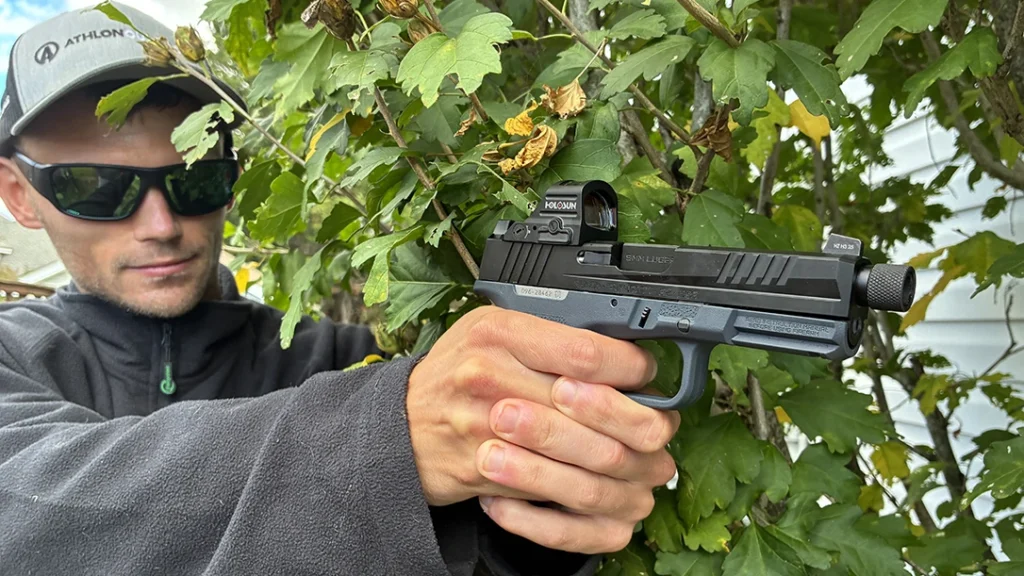
Ammo Load Out
A variety of 9mm loads were tested with the RXM, including Winchester, Hornady, Wilson Combat, and Black Hills Ammunition. A .50 caliber ammunition filled with a smorgasbord of brands and types was also utilized. Magazines are loaded with these random types for much of the range time experience. Loads fired spanned 115 to 147 grain with hollow point and FMJ bullet types. One-handed firing of the RXM, including the use of the non-dominant hand, was performed to verify that the RXM was not sensitive in terms of reliability. The RXM showed it could digest anything fed to it. The RXM’s trigger was a positive, remembering it is a service handgun. No malfunctions were experienced while firing over 520 rounds during range visits. The RXM regularly produced 3 to 3.5-inch groups at 25 yards when fired from standing, unsupported positions.

Advertisement — Continue Reading Below
The Ruger RXM-T’s threaded barrel cries out for a suppressor. I couldn’t resist. The Banish 9K at only 2.7 ounces added negligible weight while effectively mitigating noise and blast. The 3D-printed titanium 9K is 4.1 inches long and has a diameter of just 1.3 inches, making it one of the most compact 9mm suppressors available. Don’t let the compact size alarm you; sound reduction levels with the BANISH 9K are at 132 decibels. The Banish 9K is so light that it does not need a Nielsen device or booster assembly for your pistol to function properly. Just thread it onto the barrel. The Ruger RXM-T arrived with an additional 18-pound guide rod/recoil spring assembly if your chosen suppressor requires it for smooth functioning. The BANISH 9K did not require it.
Decision Time
The Ruger RXM will be recognized as an amalgamation of positive features found on striker-fired predecessors, as well as many innovative tweaks. The Ruger RXM design follows a GEN3 pattern from an Austrian manufacturer that rhymes with “clock”. This is handy for tapping into the ever-increasing aftermarket parts arena. The RXM benefits from lessons learned, combined with a manufacturer intimately familiar with quality weapon production and how to tastefully improve upon a platform—all with an attractive price point.

Advertisement — Continue Reading Below
SPECIFICATIONS: Ruger RXM Threaded barrel
- CALIBER: 9mm
- ACTION: Striker-fired semi-automatic
- BARREL: 4.5inches with 1/2”x28 thread
- OA LENGTH: 7.65-inches
- WEIGHT: 23.6 ounces (empty)
- GRIPS: Magpul Enhanced Handgun Grip (EHG)
- SIGHTS: Front tritium, rear drift adjustable (also slide cut for direct optic mounting)
- FINISH: Black Nitride Slide
- CAPACITY: Two15 round magazines
- MSRP: $569

PERFORMANCE
| Federal 135-grain Hydra Shok Deep | |
| Average Velocity | 1,118 FPS |
| Best Group | 3.25 inches |
| Black Hills 115-grain JHP | |
| Average Velocity | 1,185 FPS |
| Best Group | 3.00 inches |
| Winchester 147-grain PDX1 | |
| Average Velocity | 931 FPS |
| Best Group | 3.33 inches |
Accuracy test protocol consisted of three five-shot groups with each ammunition type; Group sizes were averaged. Velocity figures obtained by averaging five rounds fired over Garmin chronograph.
Advertisement — Continue Reading Below
WHY OUR ARTICLES/REVIEWS DO NOT HAVE AFFILIATE LINKS
Affiliate links create a financial incentive for writers to promote certain products, which can lead to biased recommendations. This blurs the line between genuine advice and marketing, reducing trust in the content.



